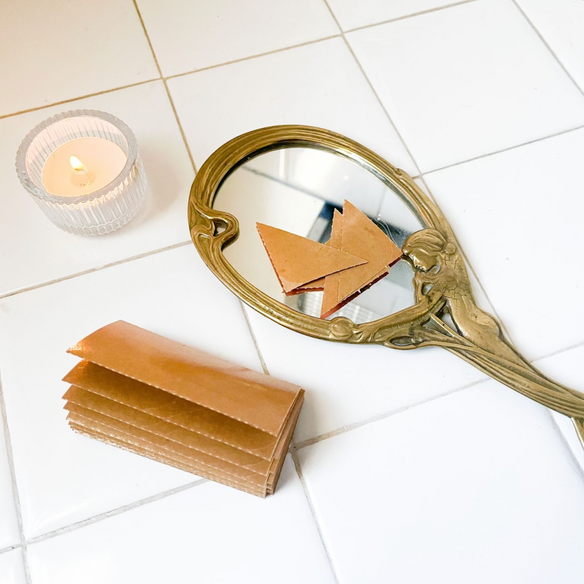
The unofficial Botnia product you might have heard of…
If we could ship out refrigerated products, you’d likely see goat’s milk yogurt added to our product line. We talk about it so much, it might as well be the adopted child in our lineup! If you’ve ever received a Botnia facial, you’ve definitely experienced the power of goat’s milk yogurt. And if you follow up your home care routine with our powdered masks, we always recommend GMY to be mixed with them. We’re here to tell you why this creamy, cooling ingredient is one of the most beloved non-Botnia products we rave about. Let’s dig into all the benefits behind our not-so-secret back bar product!
So why not cow’s milk?
Those who are intolerant to milk are usually allergic to the whey proteins in cow’s milk. Depending on the breed, goat milk contains negligible amounts of whey proteins, and so people who tend to be allergic to cow’s milk can better tolerate goat’s milk.
In some farms, dairy cows can be treated with artificial synthetic hormones that increase the milk supply produced from the cows by increasing the levels of IGF-1, an insulin-like growth hormone that causes human blood glucose levels to drop and increase sebum production in your skin. These growth hormones can throw your own hormones off balance when you drink or eat dairy, and in turn, cause an allergic reaction, sometimes manifesting as acne. Goats are not typically treated with additional hormones, making their milk more pure and clean than cow milk.
The biggest difference is the presence of lactic acid in goat milk. Newly collected cow’s milk does not contain any lactic acid content. And we love lactic acid (the gentlest of the alpha-hydroxy acids) for its ability to break down the intercellular matrix of lipids and proteins in the surface skin to help exfoliate dead skin cells and to soften skin.
For our vegan friends
There are a few alternatives to goat’s milk yogurt: honey is rich in enzymes and offers antibacterial power–just try to find a raw, local source. Or you can use coconut yogurt, which is high in probiotics.
The benefits of using GMY as skincare
The reason why goat milk yogurt is so amazing for skincare is because of the high concentration of lactic acid; a gentle alpha-hydroxy acid (an exfoliator) that removes dead skin cells and gives you smoother, brighter skin. Lactic acid is also effective at killing bacteria and helping to unclog congested pores.
The pH level of goat milk is very close to our skin, which makes it great for cleansing because it doesn’t disrupt the acid mantle on your face. “Because goat milk is so similar to human milk, the skin recognizes it and drinks it in.’’ If you have compromised barrier function using goat’s milk yogurt as a face wash or weekly mask has actually shown incredible results!
Have red, irritated skin, especially from being exposed to the sun? Goat milk yogurt to the rescue! The fatty acids in GMY have antibacterial, antifungal, and anti-inflammatory properties which help soothe your skin after a long day at the beach.
Just like hyaluronic acid, GMY is also an incredible humectant, which means it draws in moisture from its environment and helps your skin retain it. Remember, hydrated skin = glowing skin.
A key ingredient in our professional back bar
We train each and every one of our Botnia estheticians to use GMY in their treatments. In home care, it works with our powdered masks by using the enzymes to break down the raw ingredients in our mask formulations. Your body uses stomach enzymes to break down your salad to make its nutrients more bioavailable for the rest of your body, and that’s exactly what GMY does for our powdered masks. It supercharges your mask and breaks down the greens in Kale Mask or chamomile from Flower Mask and makes them more bioavailable for the surface of your skin to absorb.
GMY makes plant magic even more powerful!
How to mix GMY with Botnia powdered masks
Now that you know all the benefits of using GMY, you can take home a piece of the treatment room with this not-so-secret ingredient. We recommend using Redwood Hill Farm’s GMY which is sold at grocery stores nationwide. It’s also possible to use powdered goat milk yogurt if fresh isn’t available, though it’s not as potent and may lack some of the probiotics and enzymes that fresh will contain.
To use goat’s milk yogurt with any of your Botnia powdered masks:
- Start with freshly cleansed skin.
- Begin with a teaspoon of powder and add a teaspoon of goat milk yogurt into a small mixing bowl.
- Use a small whisk or brush to mix the two until you get a pancake batter-like consistency. (Too thick? Add more yogurt. Too thin? Add more powder.)
- Apply to the entire face, neck, and décolleté.
- Let sit for several minutes, avoiding letting the mask dry on your skin.
- Use a hydrosol to keep your skin moist while masking.
- Rinse clean.
- Follow up with your daily skincare routine.
- Note: Never apply powdered masks directly to the skin without diluting them first.
Step up your masking game by adding some goat’s milk yogurt to your routine and watch your skin glow! We love to see your mask combinations! Don’t forget to tag us @botniaskincare if you post on social media!
Happy Masking!
-Team Botnia



















